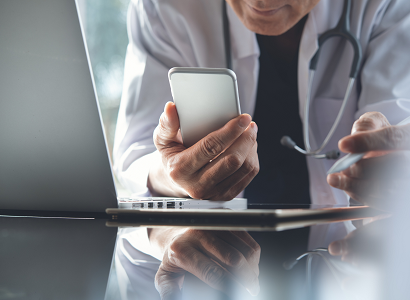The hopes of telemedicine
Publish date 21-11-2023
 During the Covid pandemic, healthcare was called to face very important difficulties. As always happens, these problems have made clear the need to update classic medical techniques with the use of new technologies. This emergency also made it possible to develop strategies and working methods, which would not have accelerated so rapidly in normal times. One of the frontiers that we have attempted to strengthen is that of telemedicine, or the possibility of carrying out medical interventions remotely.
During the Covid pandemic, healthcare was called to face very important difficulties. As always happens, these problems have made clear the need to update classic medical techniques with the use of new technologies. This emergency also made it possible to develop strategies and working methods, which would not have accelerated so rapidly in normal times. One of the frontiers that we have attempted to strengthen is that of telemedicine, or the possibility of carrying out medical interventions remotely.
If in the past we could imagine a phone call with your trusted doctor as the only remote intervention, already considering the possibility of finding the free line and having an answer to our rings as miraculous; today the term telemedicine means something much broader. Telemedicine is considered the digital evolution of traditional medicine: a set of tools useful for communicating between the doctor and the patient remotely, also allowing the creation of a dialogue between specialists and an intervention network in the area, capable of assisting and monitor patients only with digital technologies.
There are four areas in which telemedicine is developed: remote visits, where the doctor can visit the patient using digital communication tools; teleconsultation, when doctors discuss the diagnosis and treatment to prescribe for a patient; remote cooperation, where in emergency situations doctors and other healthcare professionals discuss the procedures to follow; tele-monitoring, which allows you to monitor specific parameters of patients with chronic diseases, thanks to the use of special devices.
Recently we received news about the importance of tele-monitoring, which allowed the rescue of a 13-year-old girl. The little girl is being cared for at the Regina Margherita pediatric hospital in Turin due to significant arrhythmia problems which cause her to feel ill and even lose consciousness; for this reason she was implanted with a loop-recorder, which is a miniaturized device that monitors every heartbeat in real time, wherever she is, and records it, transmitting the data to a central server. In this way the child is subjected to continuous remote cardiac monitoring and the cardiologist can check the heart at any time and can be alerted via SMS in the event of events that are dangerous to the child's life. Precisely on the day of August the loop-recorder recorded an interruption in the heartbeat of over 20 seconds and an alert was promptly sent to the doctor; this allowed for her prompt intervention and the implantation of a pacemaker which resolved the situation positively.
A beautiful example of how new technologies have the possibility of making medicine even more effective.
Valentina Turinetto
NP October 2023







